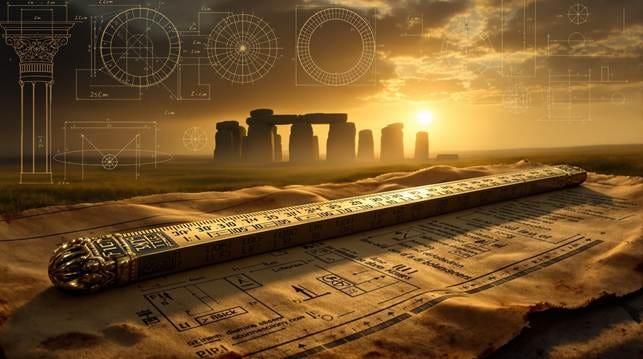The Secret in the Stones: Ancient Units of Measure That Shouldn’t Exist
How did a unit of measurement survive from the builders of Stonehenge, over four thousand years ago, through the Roman Empire, and persist in France until the French Revolution? More remarkably, how could prehistoric Britons have possessed the mathematical sophistication to create measurement systems linked to the size of the Earth itself? These questions challenge our assumptions about ancient knowledge and demand answers rooted not in modern theories, but in empirical evidence carved in stone.
Stand within the great sarsen circle at Stonehenge and you are surrounded by a measurement standard etched into megaliths: exactly 100 “Roman” feet in diameter, a unit that would later span the Mediterranean world. Yet this monument predates Rome by millennia. The lintels, weighing four tons each and placed fourteen feet above ground, are curved on their inner surfaces to match the perfect circularity of the ring, a level of precision that suggests these stones were meant to preserve something far more significant than mere architecture.
The mystery deepens when we discover that ancient Greek temples, built thousands of miles away and centuries later, encoded the same geodetic principles, their measurements directly derived from the circumference of the Earth. Either we face an astonishing series of coincidences, or we must acknowledge the existence of a sophisticated, forgotten culture whose mathematical and surveying knowledge rivaled our own. The evidence for this forgotten science lies not in speculation, but in the monuments themselves, measured and analyzed by generations of scholars from Sir Flinders Petrie to Alexander Thom. Let us examine what the stones actually tell us.



